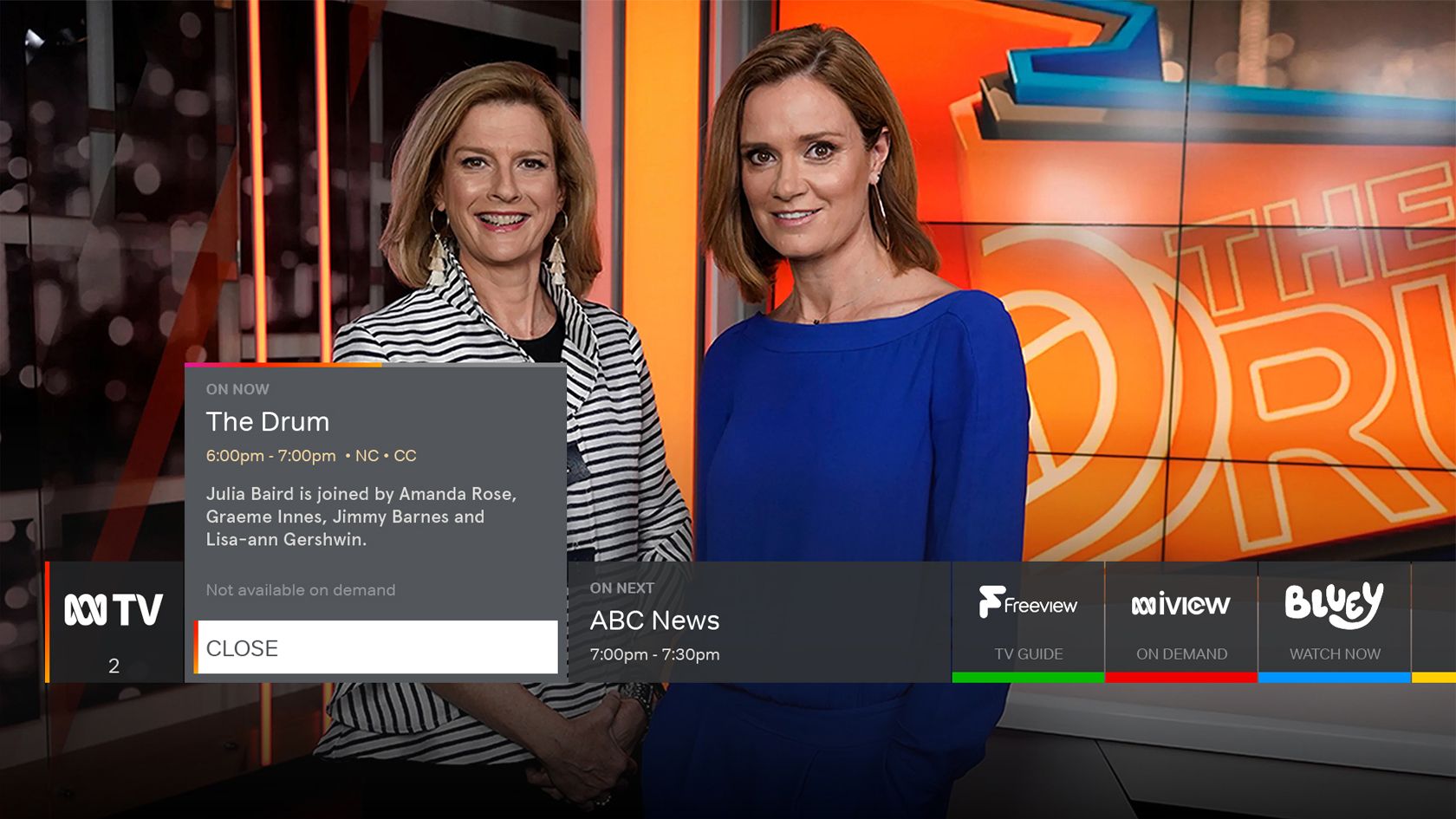Next Generation Digital Television
In January 2018, Free TV Australia announced that it was partnering with Broadcast Australia and TX Australia to undertake trials of the next generation of digital television broadcast technology.
While it is still in the testing phase, Free TV Australia is hopeful that this next generation of technology – known as DVB T2 – will enable our members to deliver an enhanced viewing experience for millions of Australians. This may include 4K or UHD broadcasts, allowing sparkling pictures and immersive sound on the DTT platform. And as always, Australian, Trusted and Free.
DVB T2 is the world’s most advanced DTT system, offering more robustness, flexibility and 50% more efficiency than any other DTT system. You can find out more about DVB T2 here.
Viewer Access Satellite Television (VAST)
In regional and remote Australia, commercial free-to-air television is a particularly highly valued source of local content and local news services. It connects Australians with their communities and serves an important function in remedying the sense of distance and isolation that can arise in geographically remote locations.
Viewer Access Satellite Television (VAST) is critical to delivering these services. In remote parts of Australia, VAST is the only way to provide access to television services. VAST also helps us provide a television signal in regional and metropolitan digital television black spots areas.
VAST was introduced in 2010 to close the digital TV divide between regional and remote Australians and those living in cities, and to ensure that all Australians can access reliable free-to-air television services. The introduction of VAST marked the first time that viewers in remote areas enjoyed access to the substantially the same program content as metro and regional viewers.
Close to 200,000 Australian households and approximately 30,000 travellers currently rely on VAST to access television services.
Get more information on the VAST service.
Managing the Spectrum
Spectrum planning and international co-ordination
The use of radio frequency spectrum is regulated by international agreement through the International Telecommunications Union (ITU). This process is called international co-ordination, and the agreements reached are a form of international treaty. In Australia, the national framework for spectrum use is set by the regulator, ACMA.
Spectrum planning is the process by which channels and powers are chosen for each transmitter site in order to deliver the required television coverage to the viewing public, within the geographically licenced frameworks established by the ACMA.
ACMA’s Australian Radiofrequency Spectrum Plan
Broadcast Spectrum Planning
The part of the spectrum designated for broadcast services is known as the ‘broadcasting services bands’ (BSBs) under the Broadcasting Services Act.
The ACMA is required to prepare licence area plans and television licence area plans (LAPs and TLAPs). These determine the number and characteristics, including technical specifications, of broadcasting services that are to be available in particular areas (licence areas) of Australia through the use of the BSBs. This includes both the spectrum usage and the mix of broadcasting services.
Technical specifications relate to spectrum matters only. They may include frequency, maximum effective radiated power, the site of transmitters and any special conditions relating to antenna radiation patterns, and other technical conditions.
In making these plans, the ACMA is required to promote the objects of the Broadcasting Services Act, including promoting the availability of a diverse range of television services to audiences throughout Australia.
Find out more about ACMA’s Broadcast Spectrum Planning
Free TV and Spectrum Planning
Free TV Australia plays an important role in ensuring that enough spectrum is allocated to broadcasting services so that Australians can continue to enjoy free-to-air television services.
Free-to-air television is highly valued by the Australian public. It is the only media platform which provides universal free access to audio-visual content to all Australians and will continue to be the primary way that people access content into the future.
Regulation of the Australian broadcasting industry reflects a delicate balance of concessions, obligations and regulations designed to ensure that important social and cultural objectives are met. Unlike many countries where public policy objectives are largely funded by the public purse, Australia has relied heavily on commercial broadcasters, funded solely by advertising revenues, to deliver these objectives.
It is therefore critical that the enough spectrum continues to be allocated to broadcasting services.




